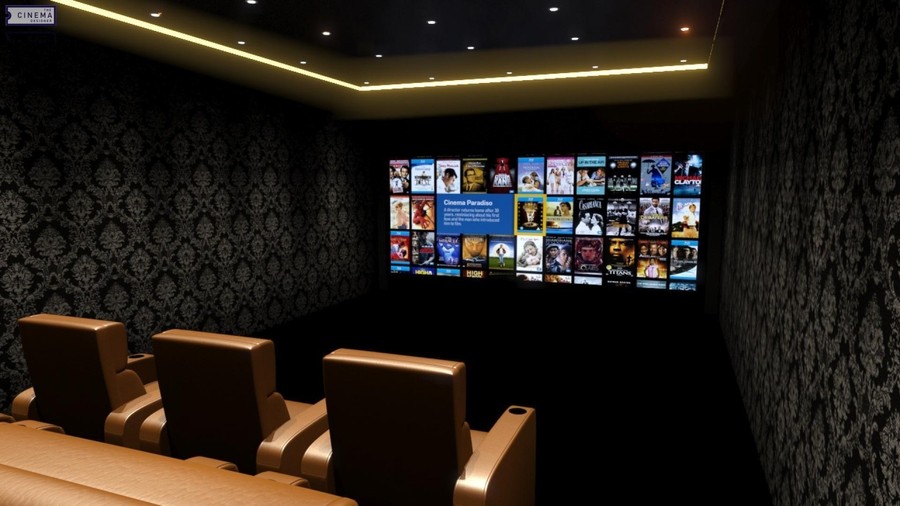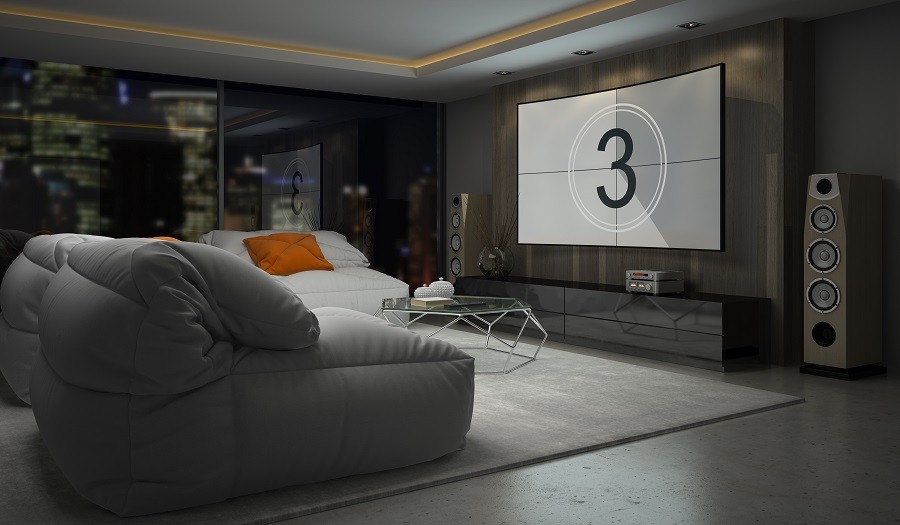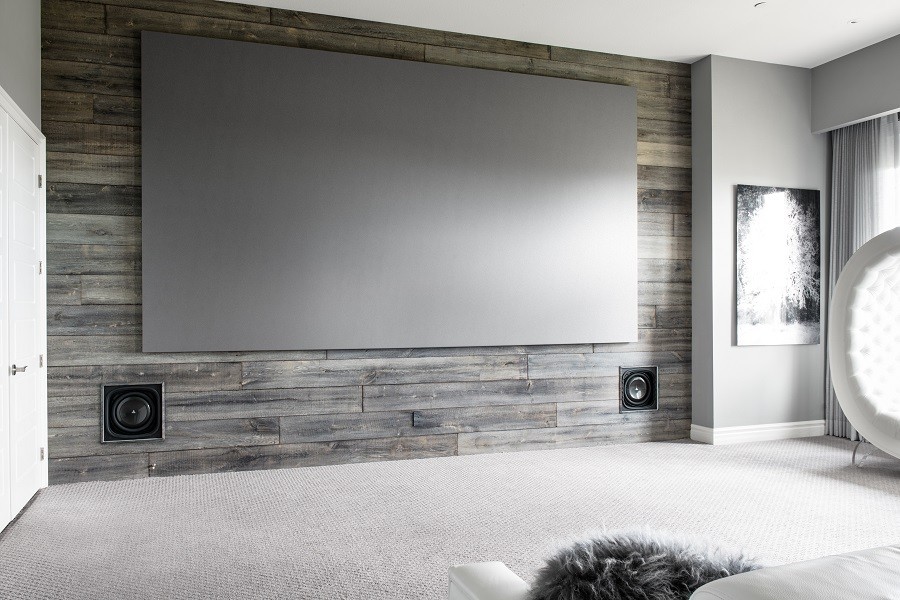When You Might Choose Freestanding Speakers
You’re Adding Speakers to an Existing Room
One of the key differences between freestanding and architectural speakers is installation. Freestanding speakers, whether bookshelf or tower, don’t require opening walls. If you’re upgrading an existing room and don’t want to tear into walls for built-in speakers, then choose freestanding instead.
You Prefer to Showcase Your Audio Gear
Whether you’re upgrading an existing room or building from scratch, you might still choose freestanding speakers if you love the aesthetic appeal that they add to your home theater. After all, many high-end tower and bookshelf speakers today are works of art! Still, keep in mind that large speakers—especially those placed on either side of your display—could distract viewers from the screen.
SEE ALSO: Home Theater FAQ: What to Know About Screens and Projectors




